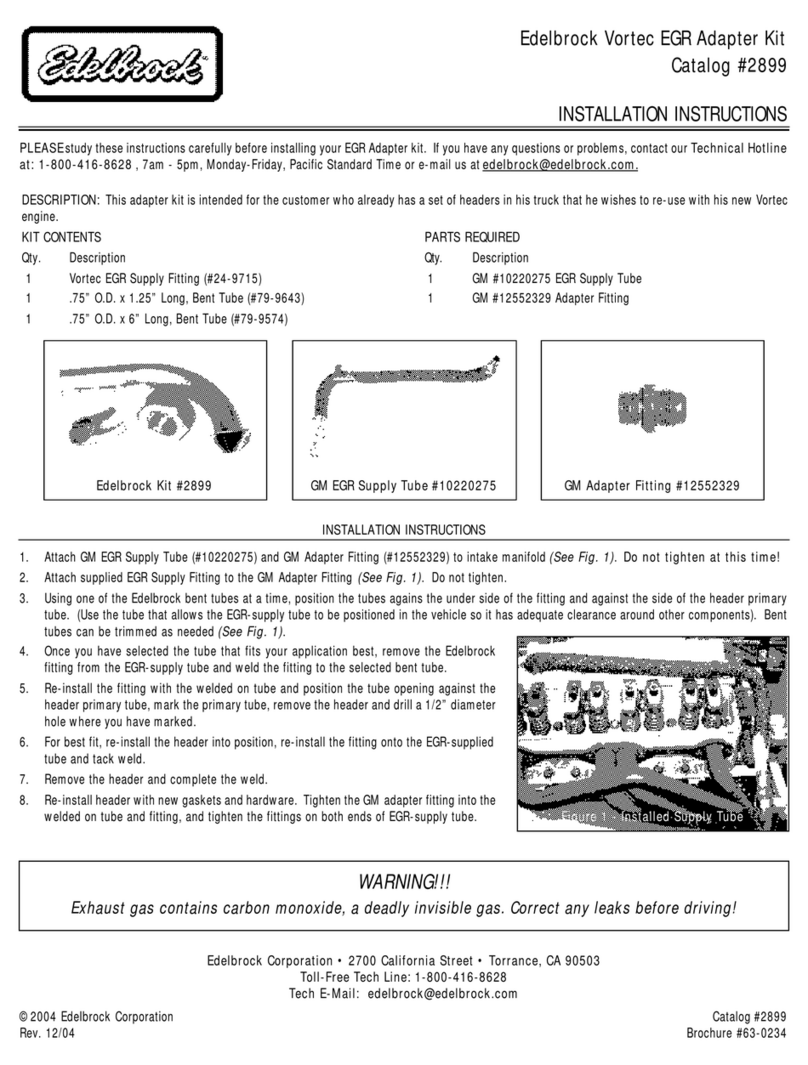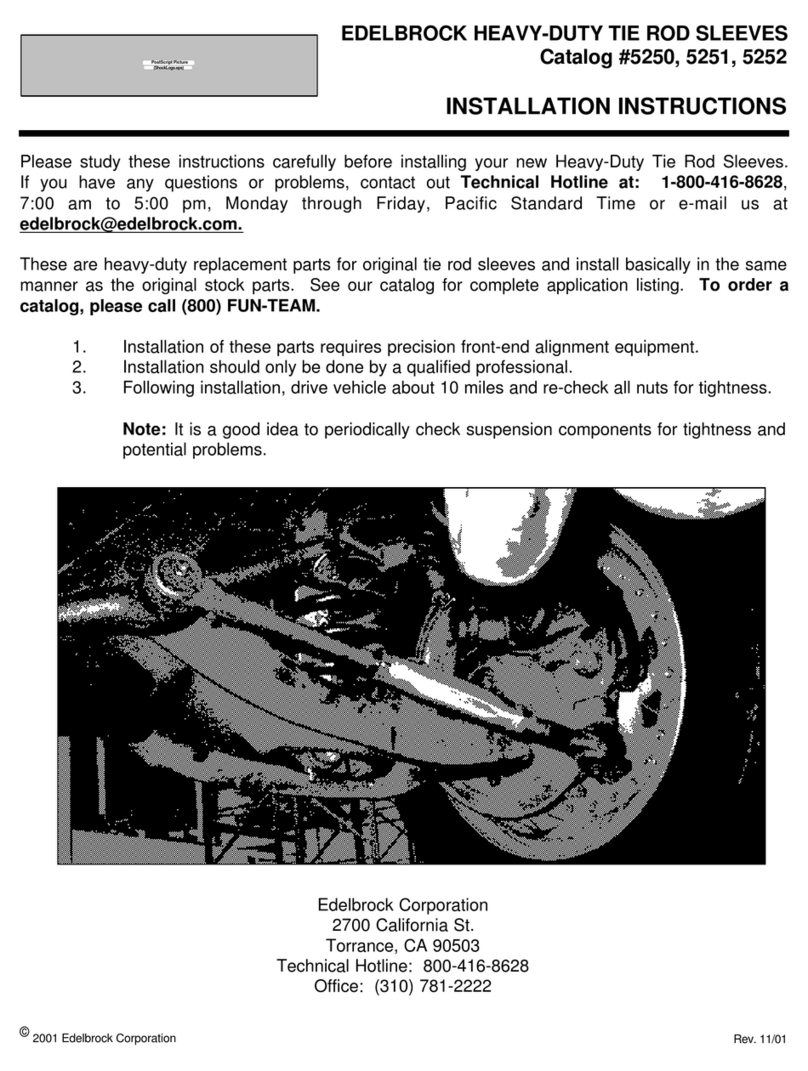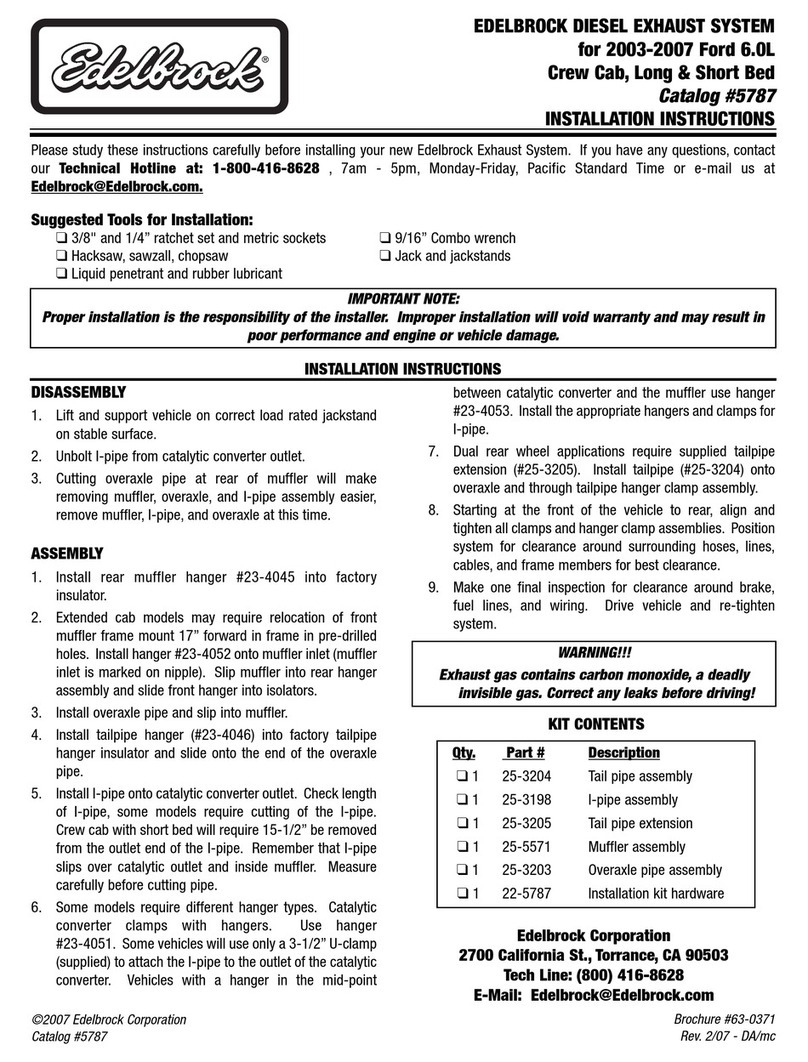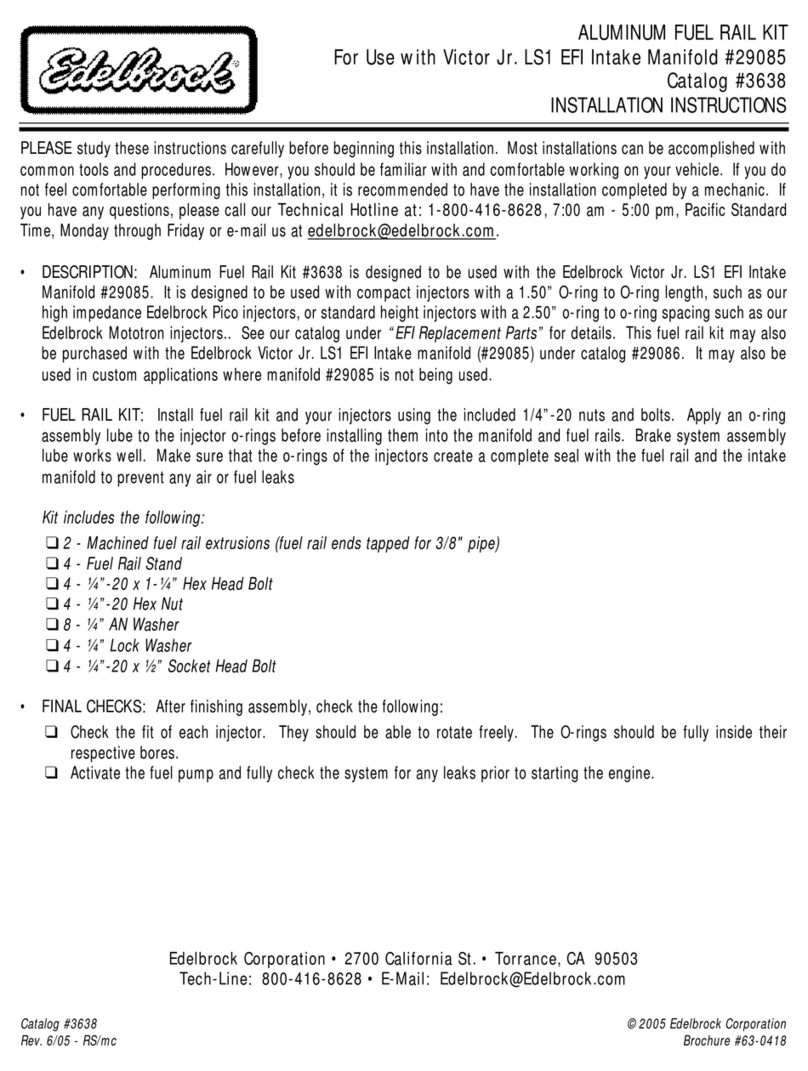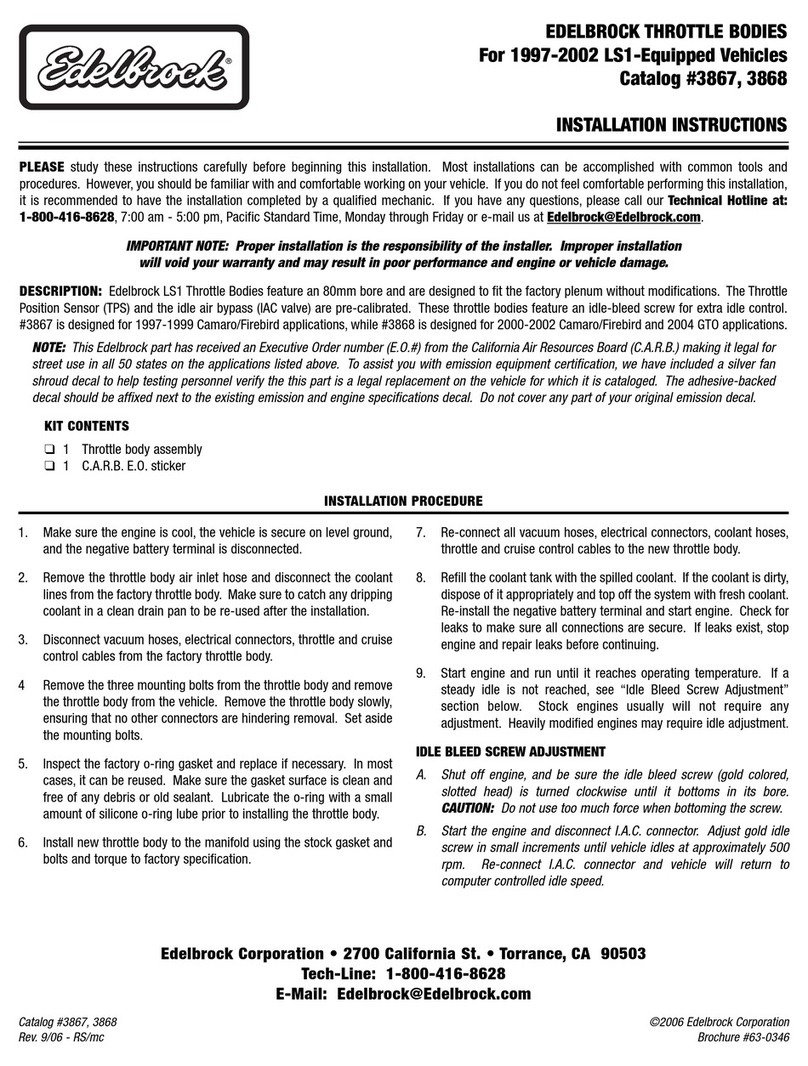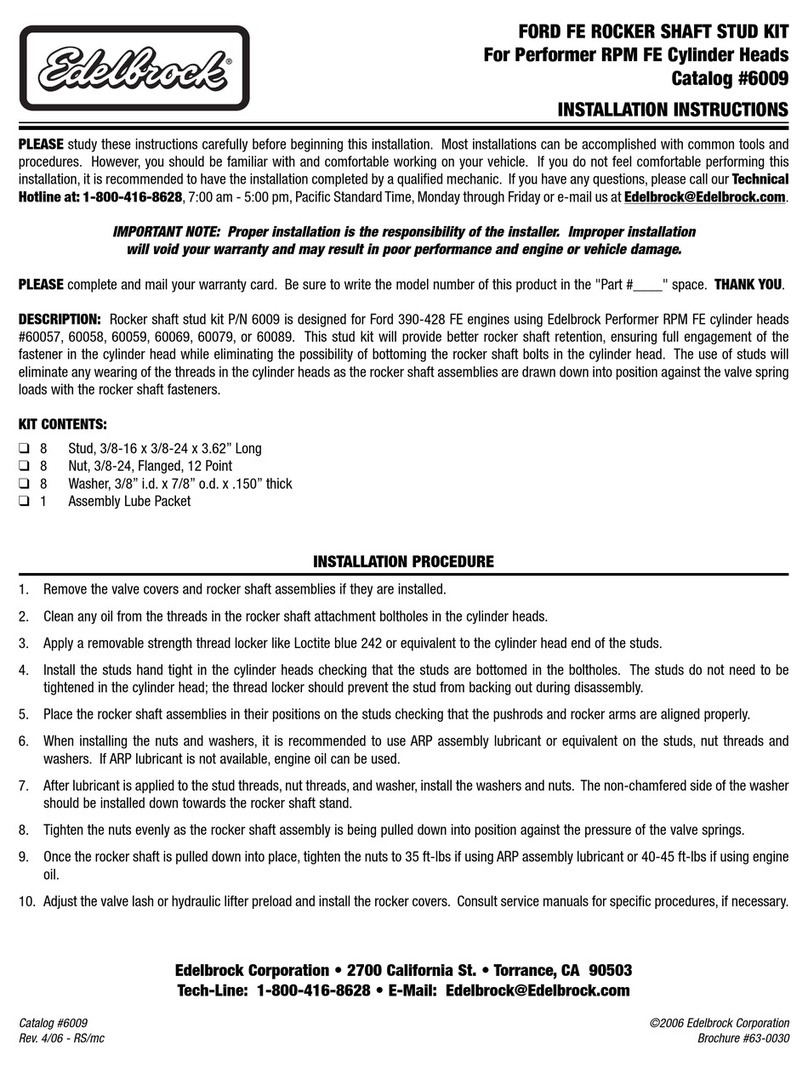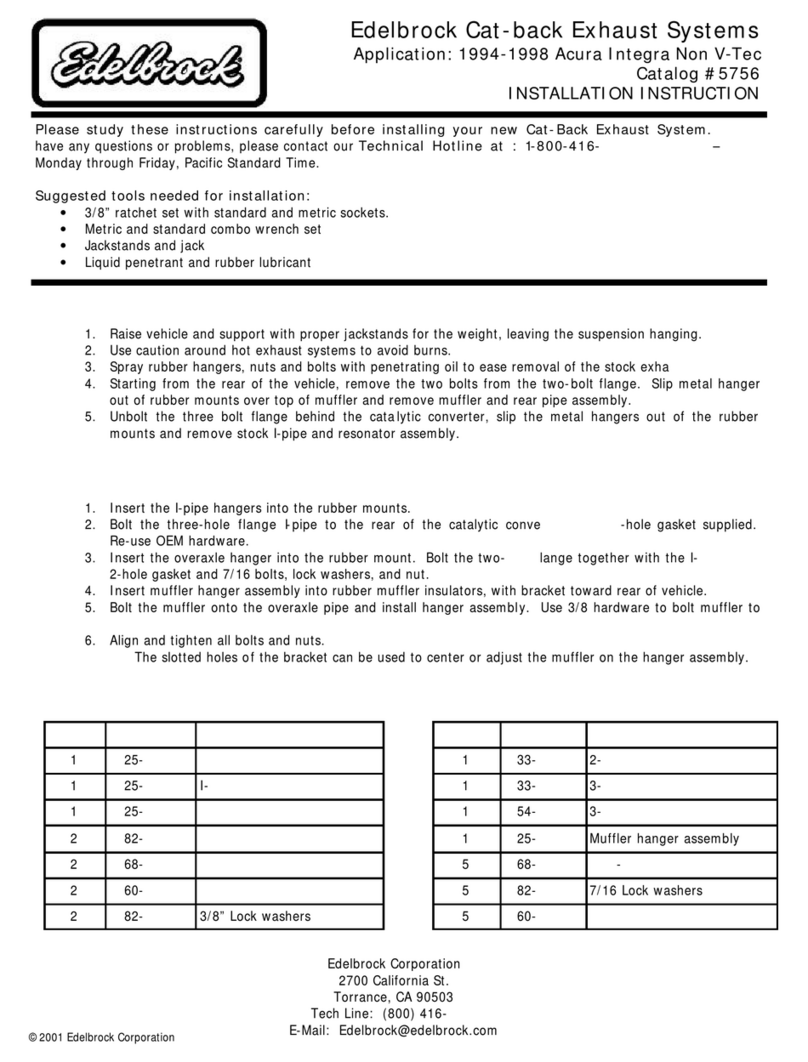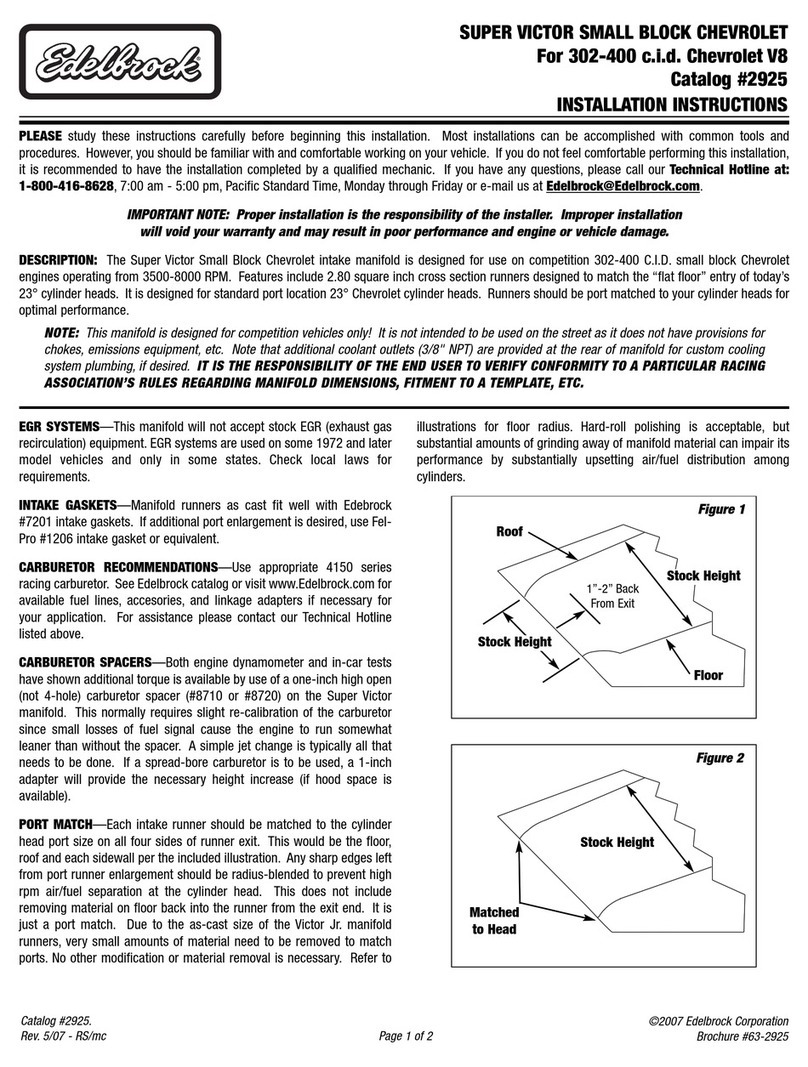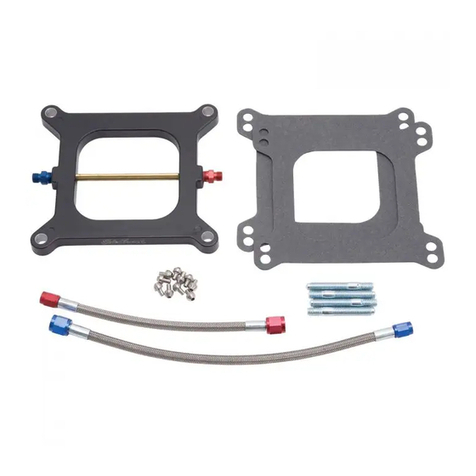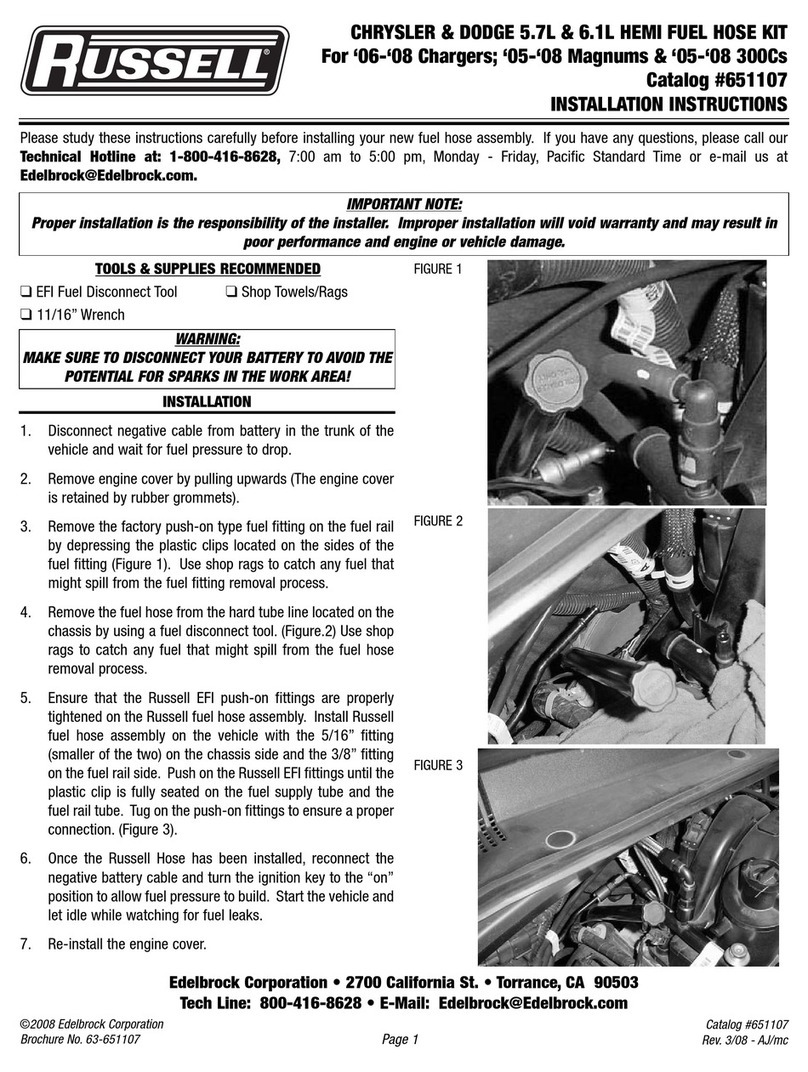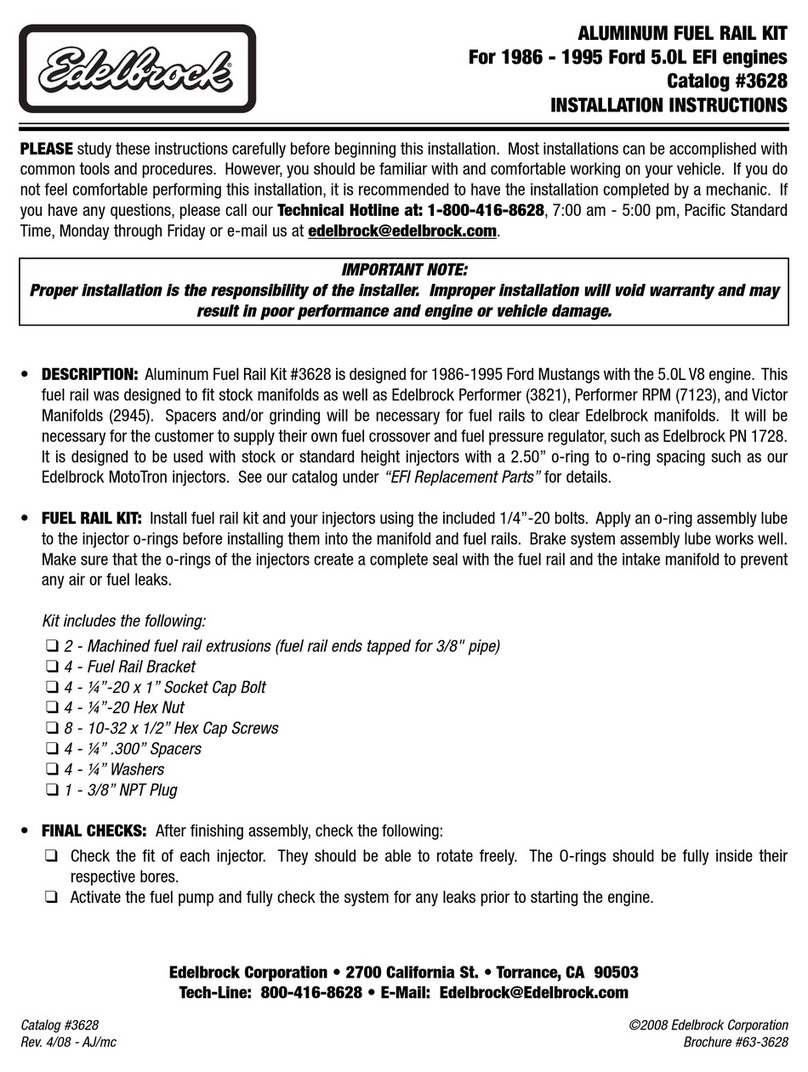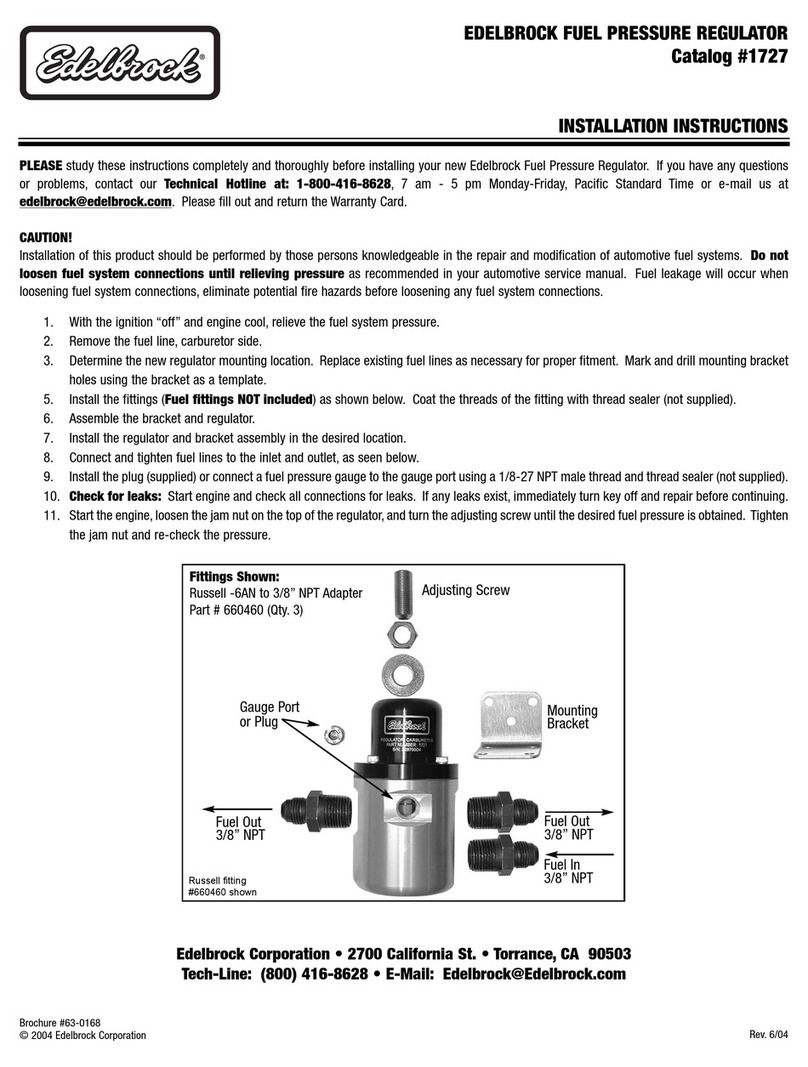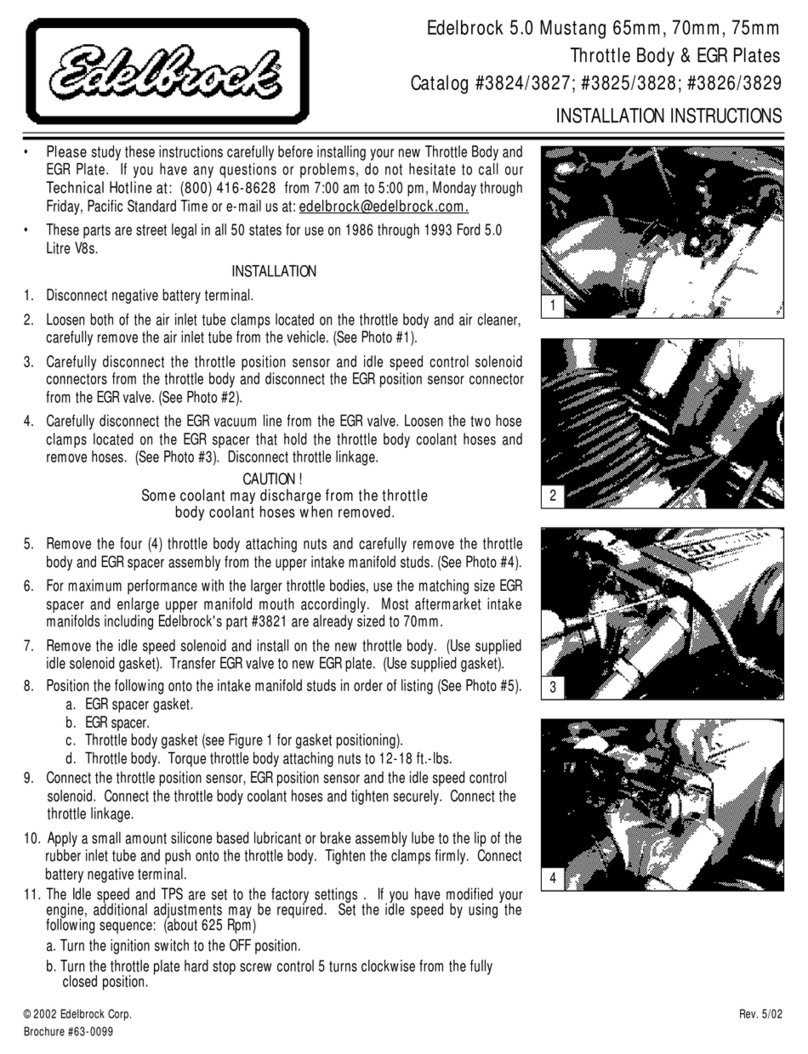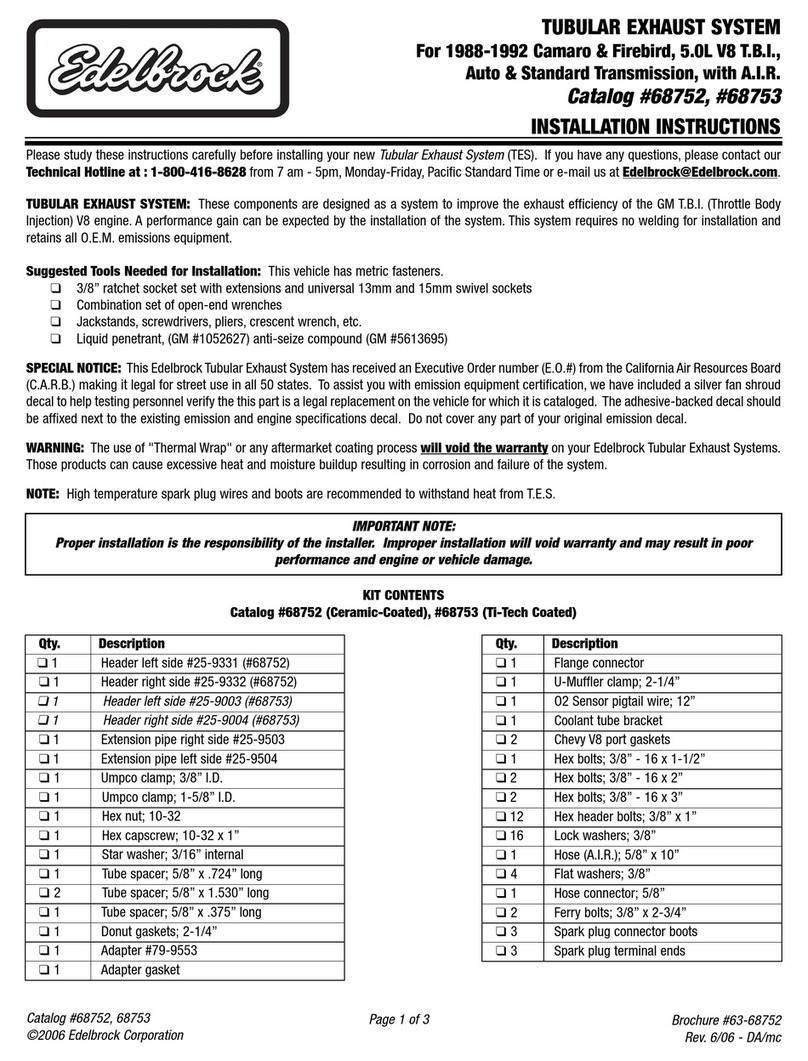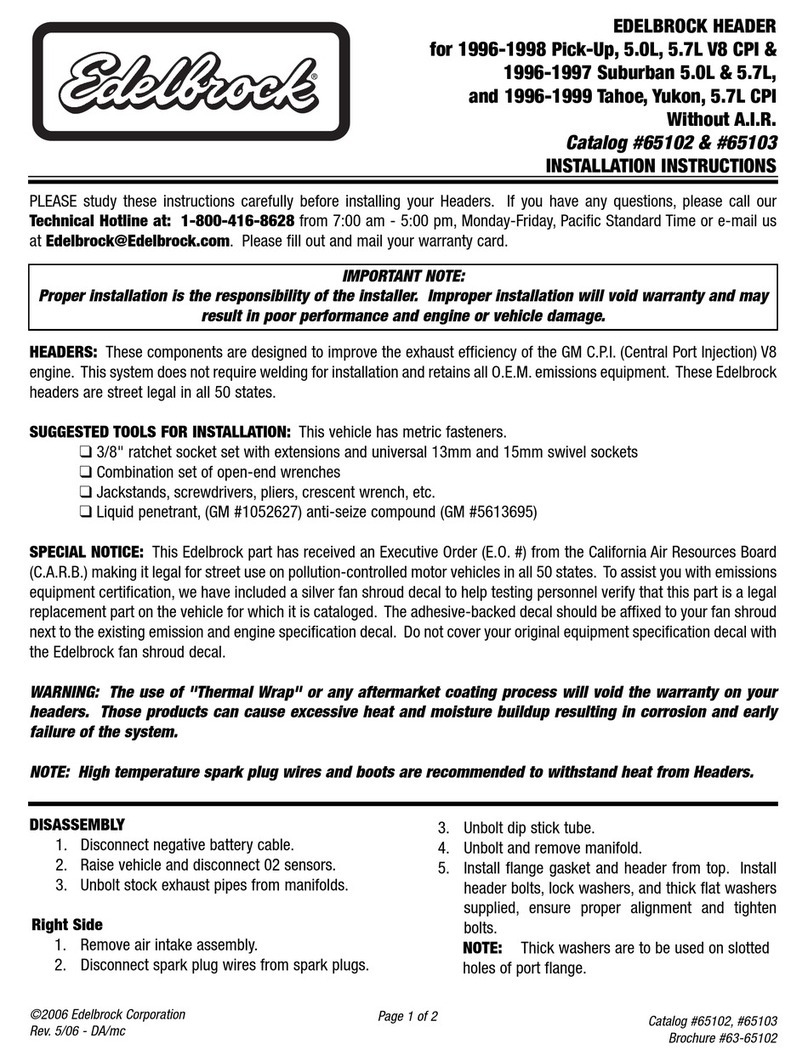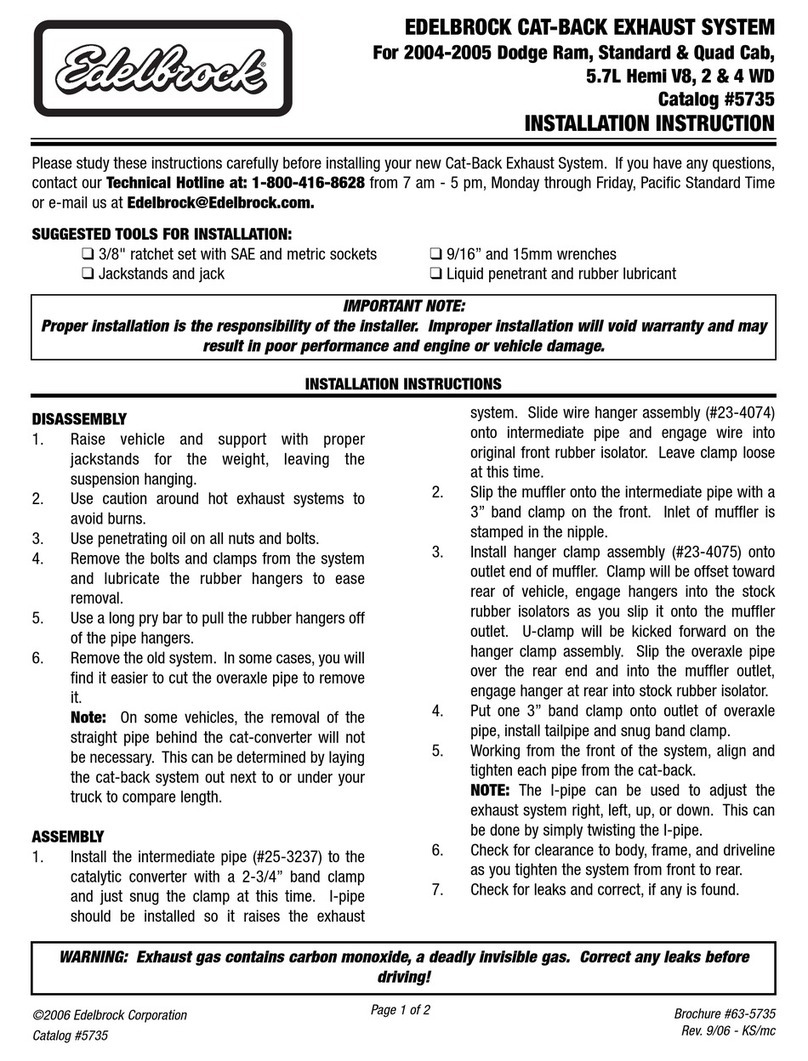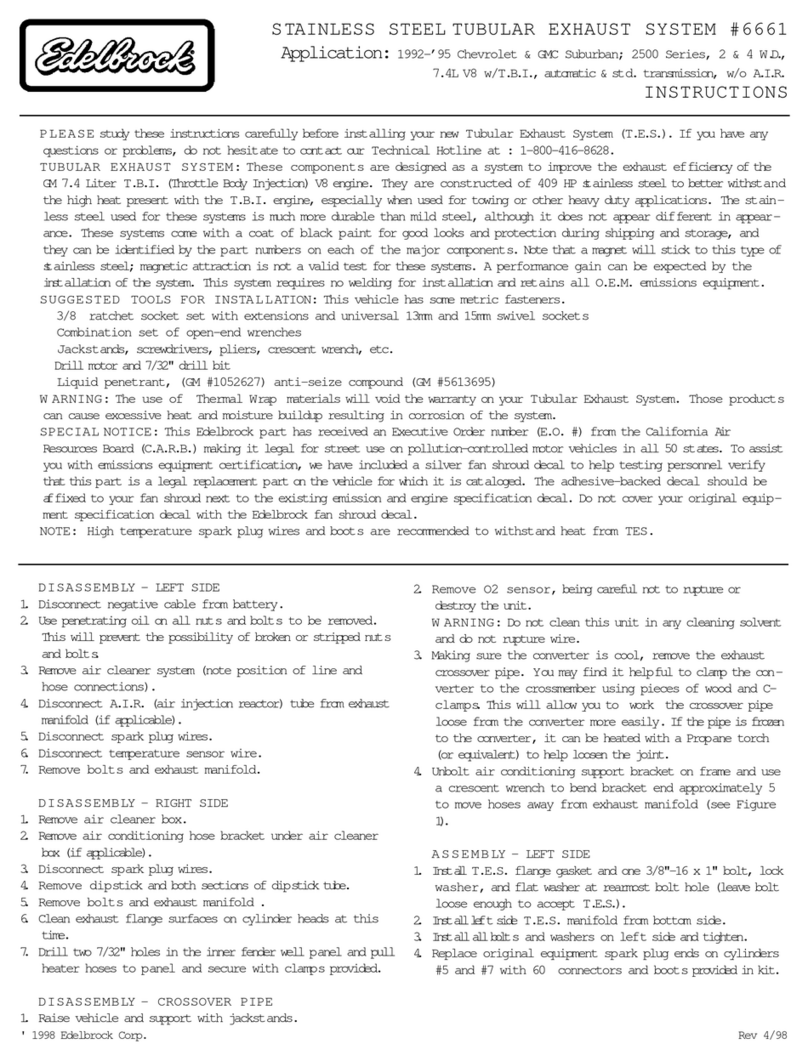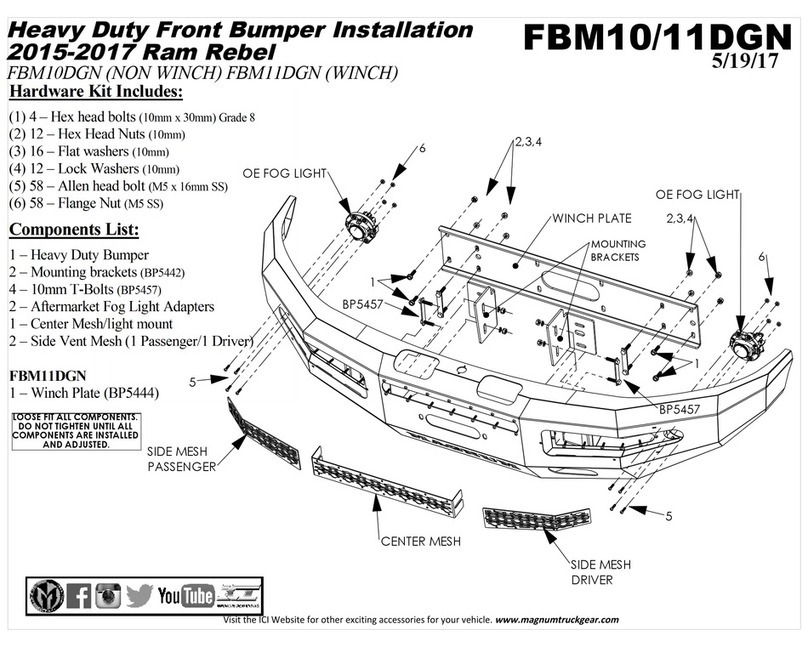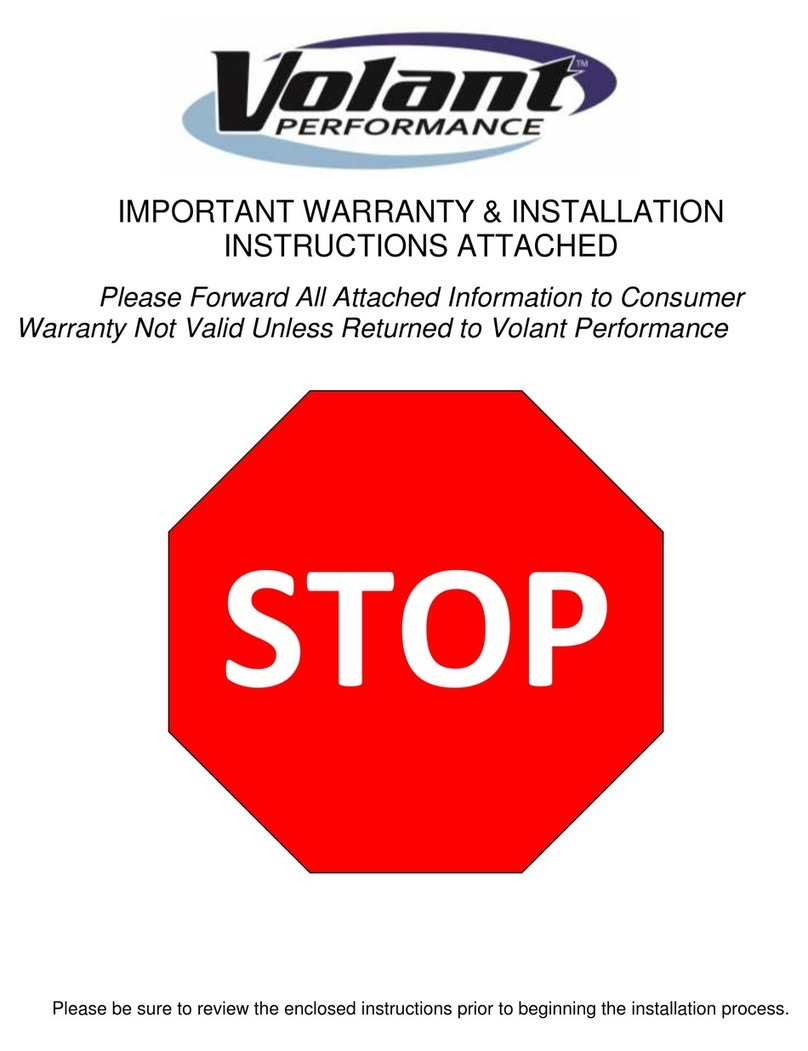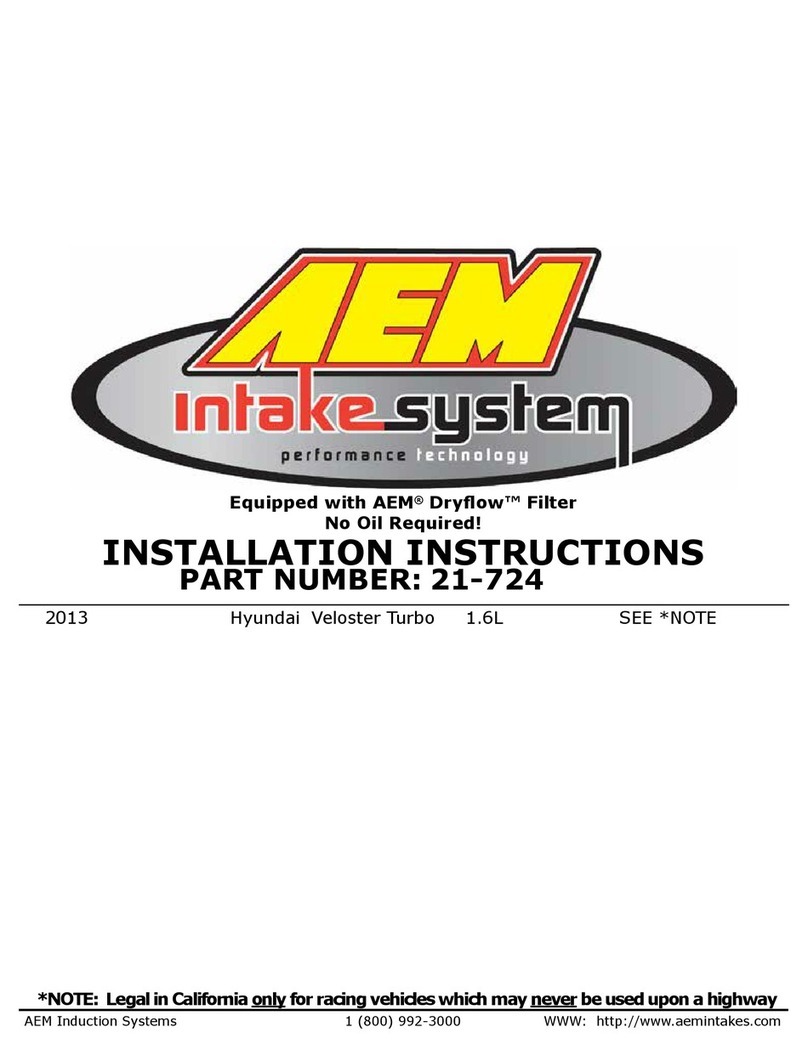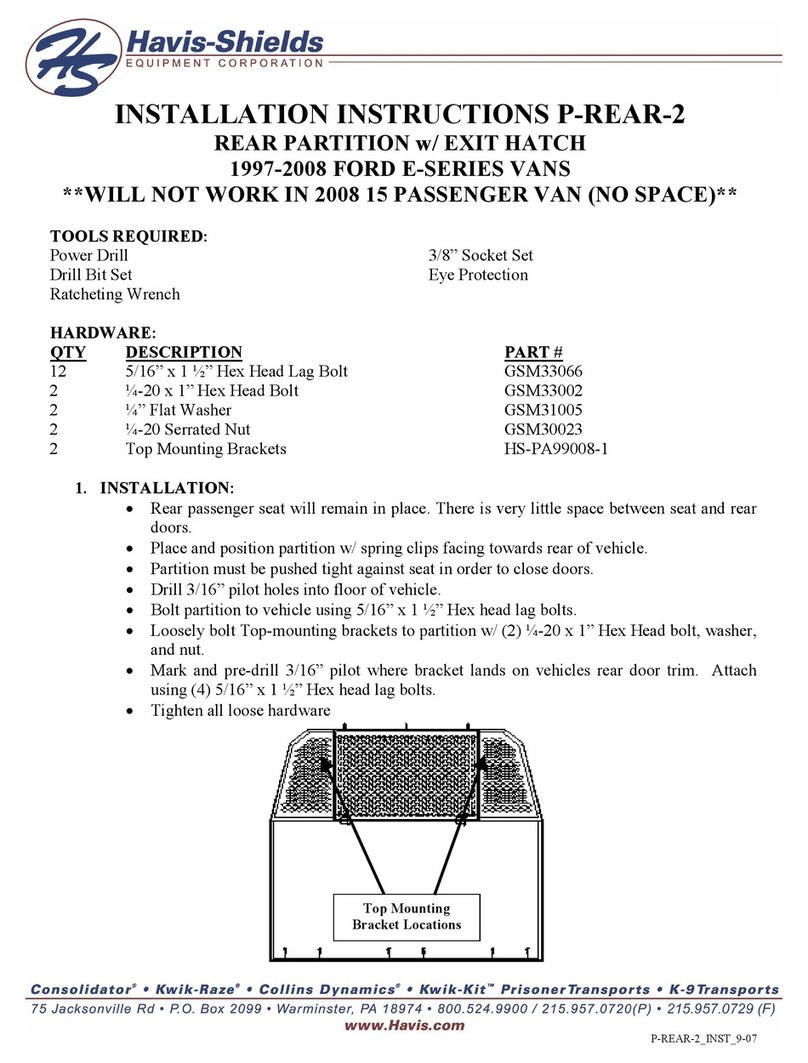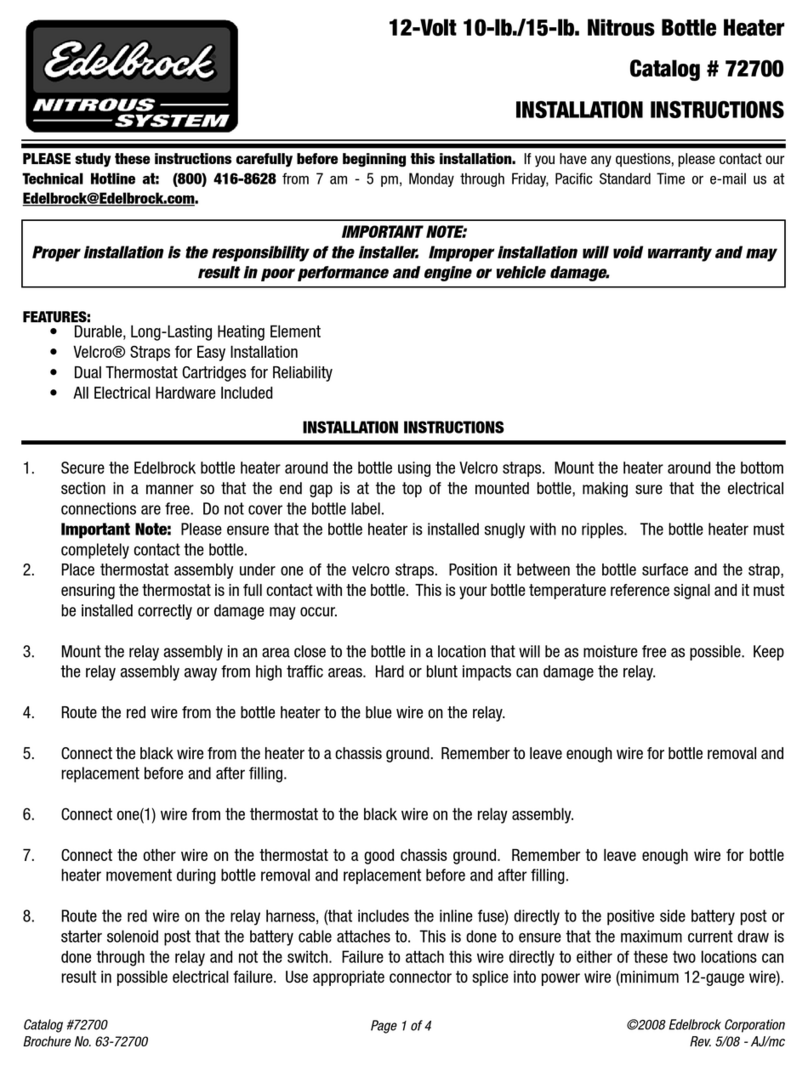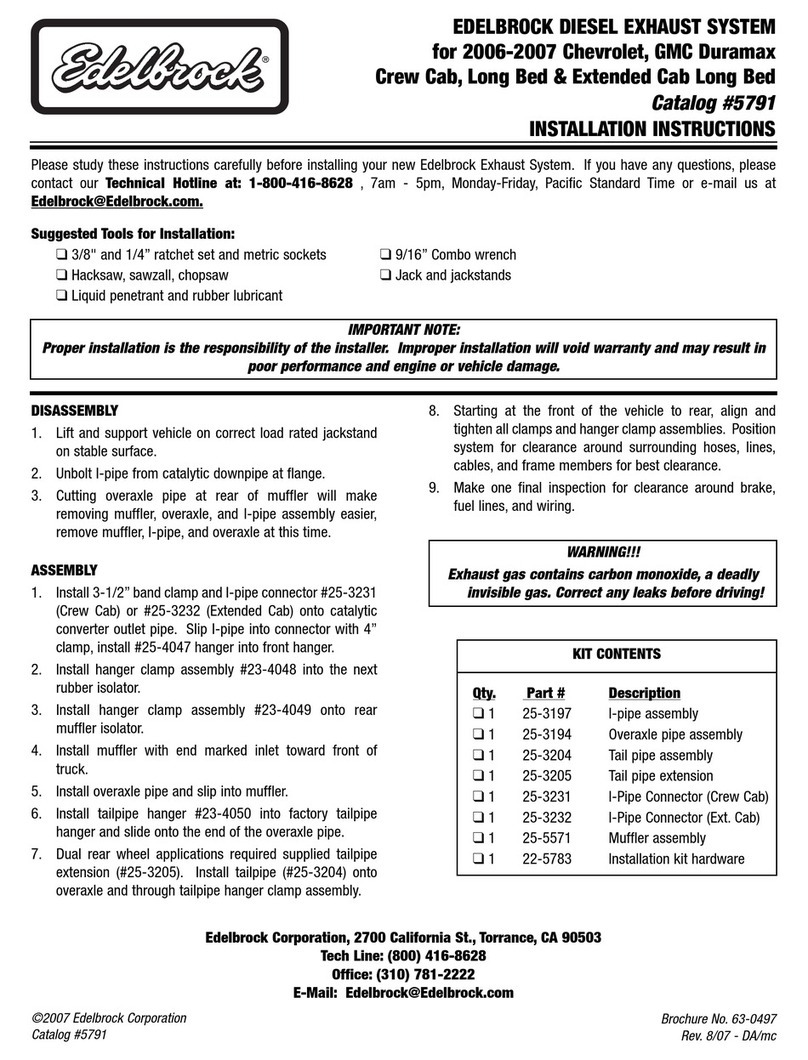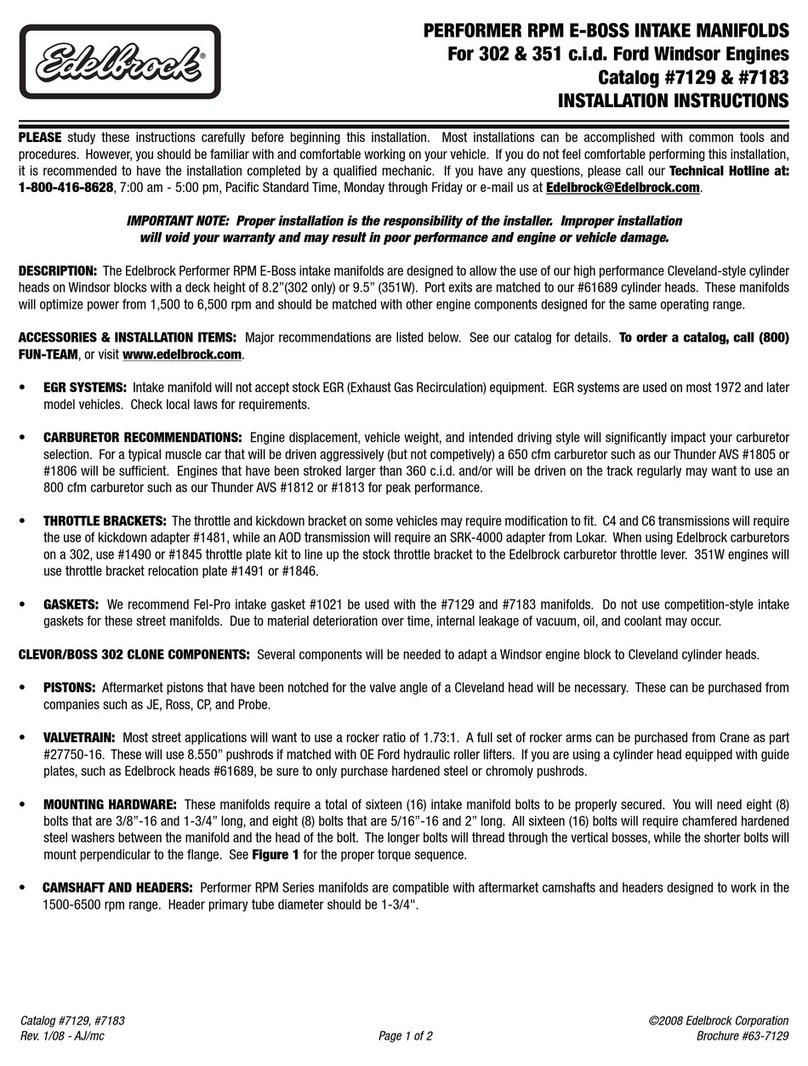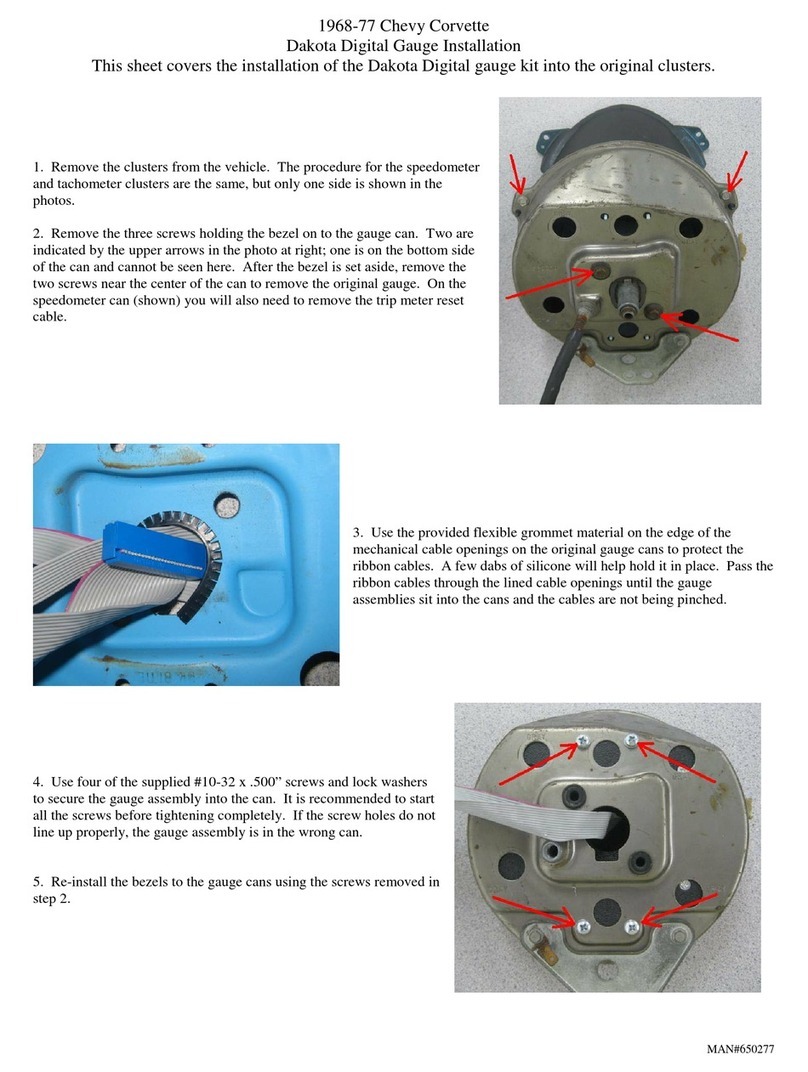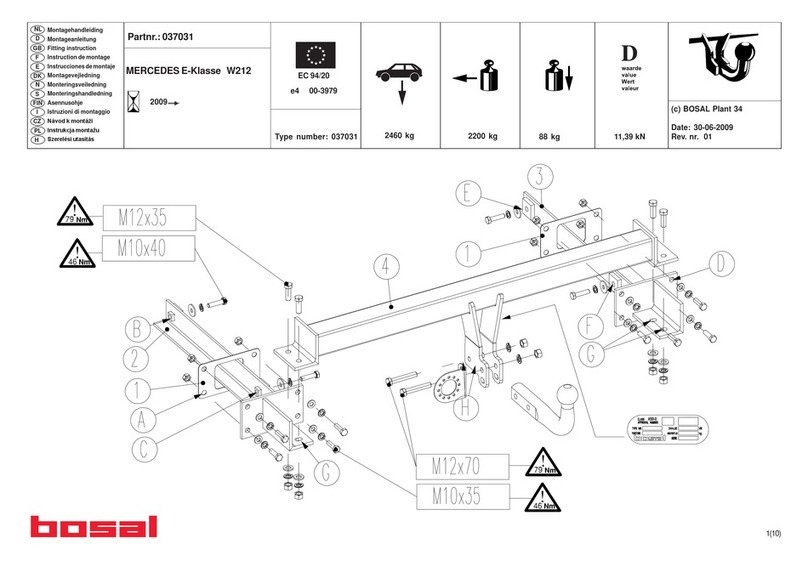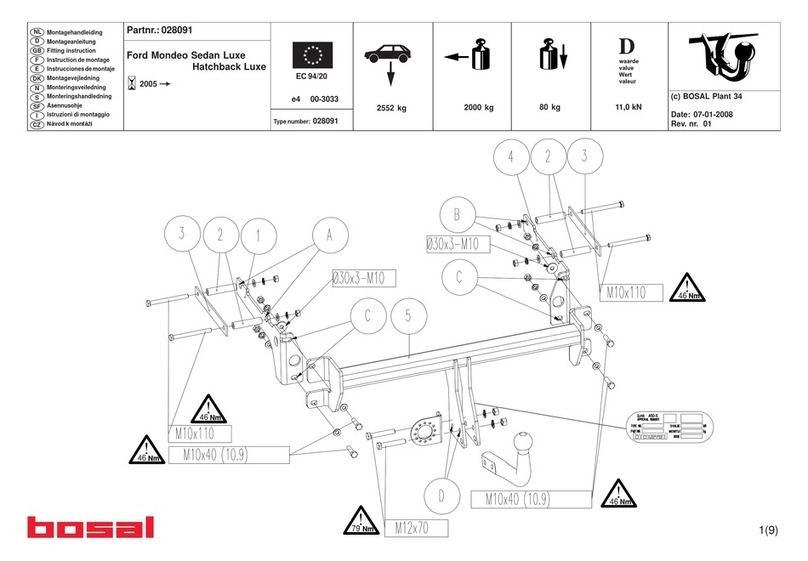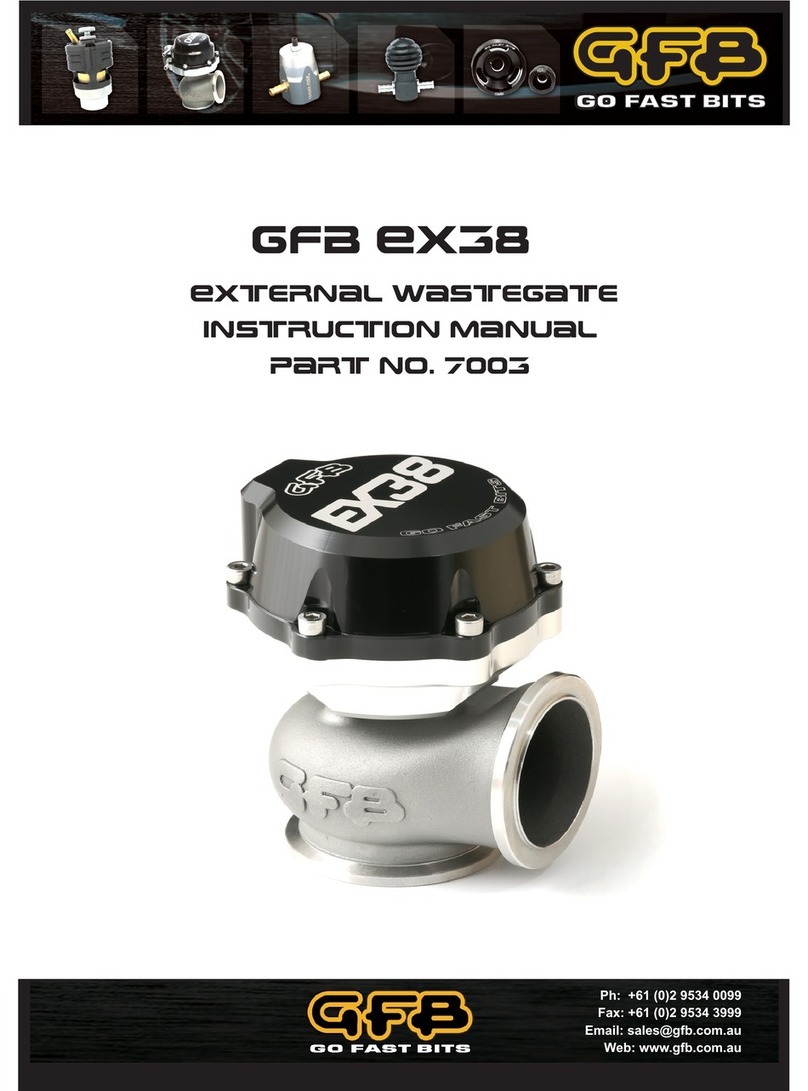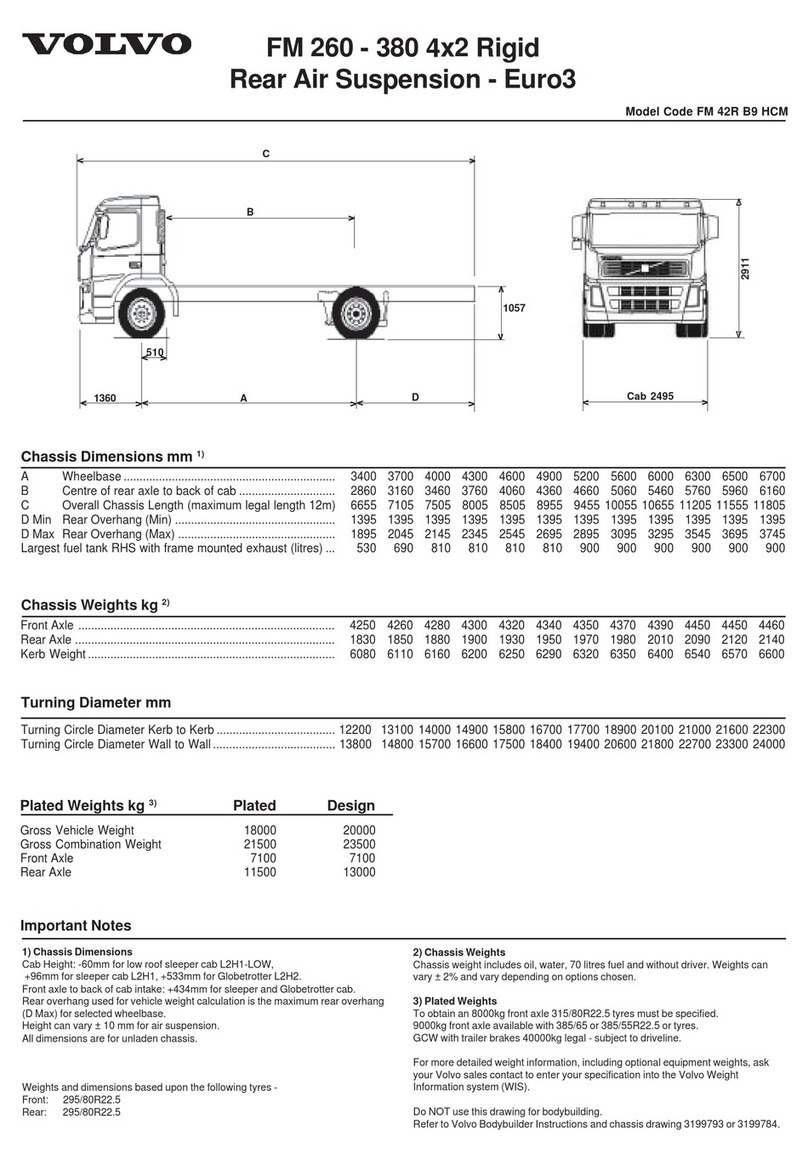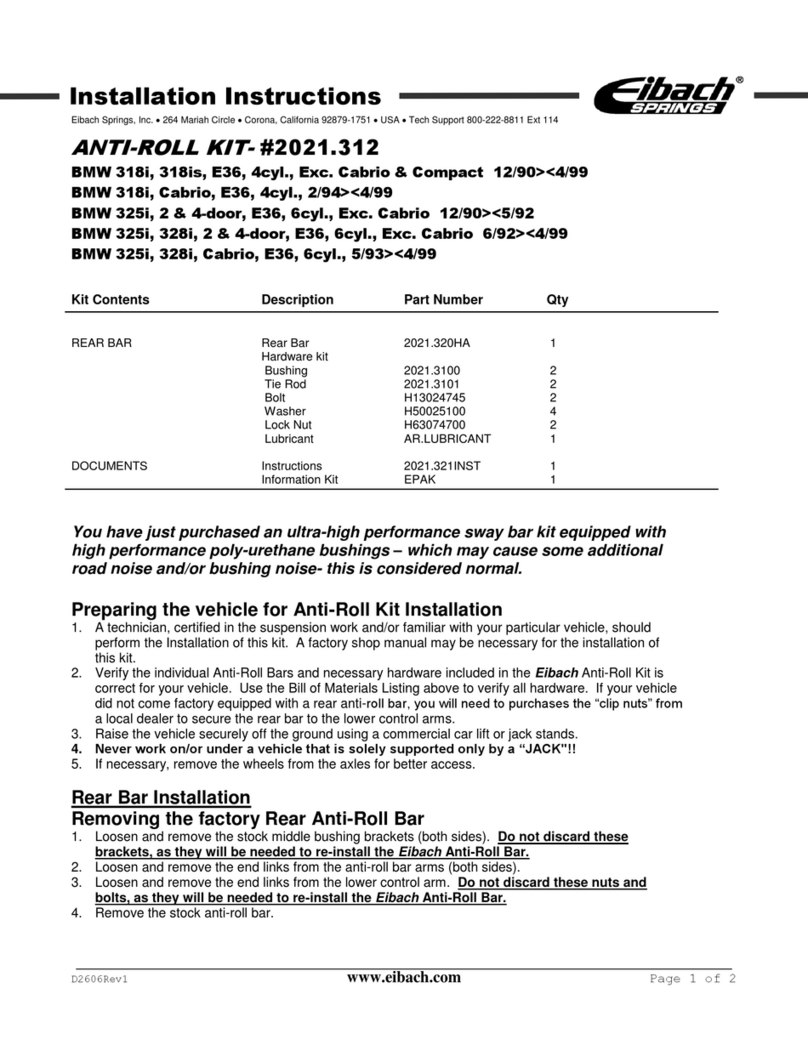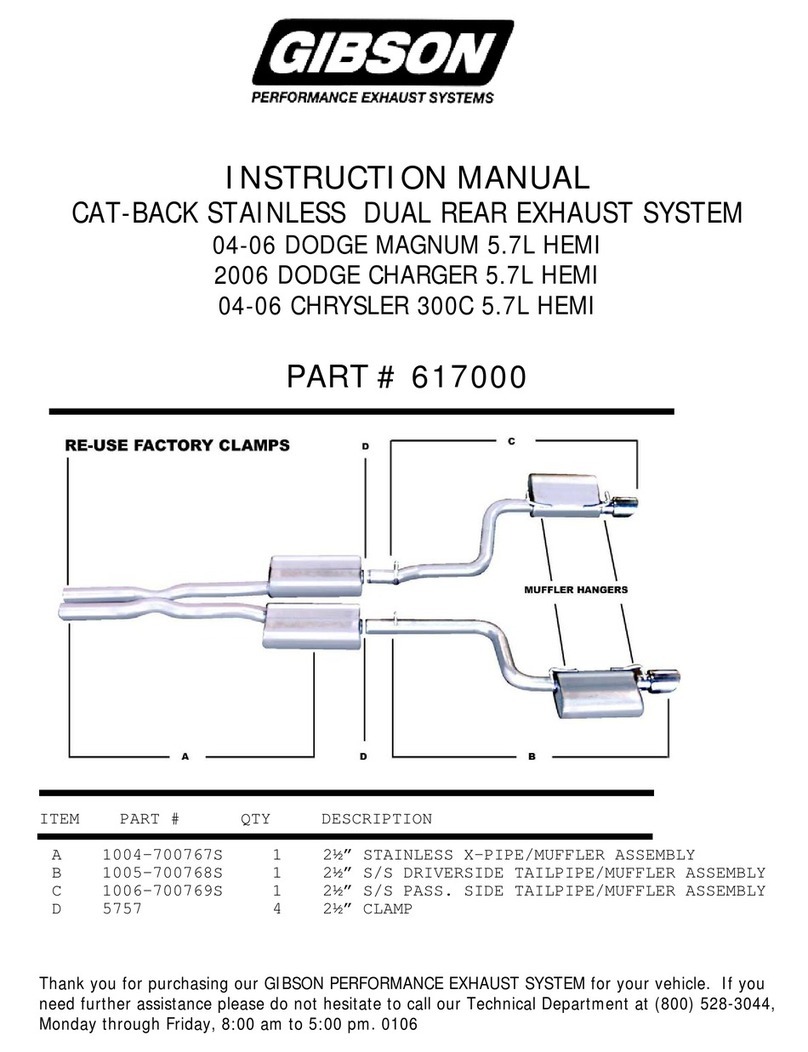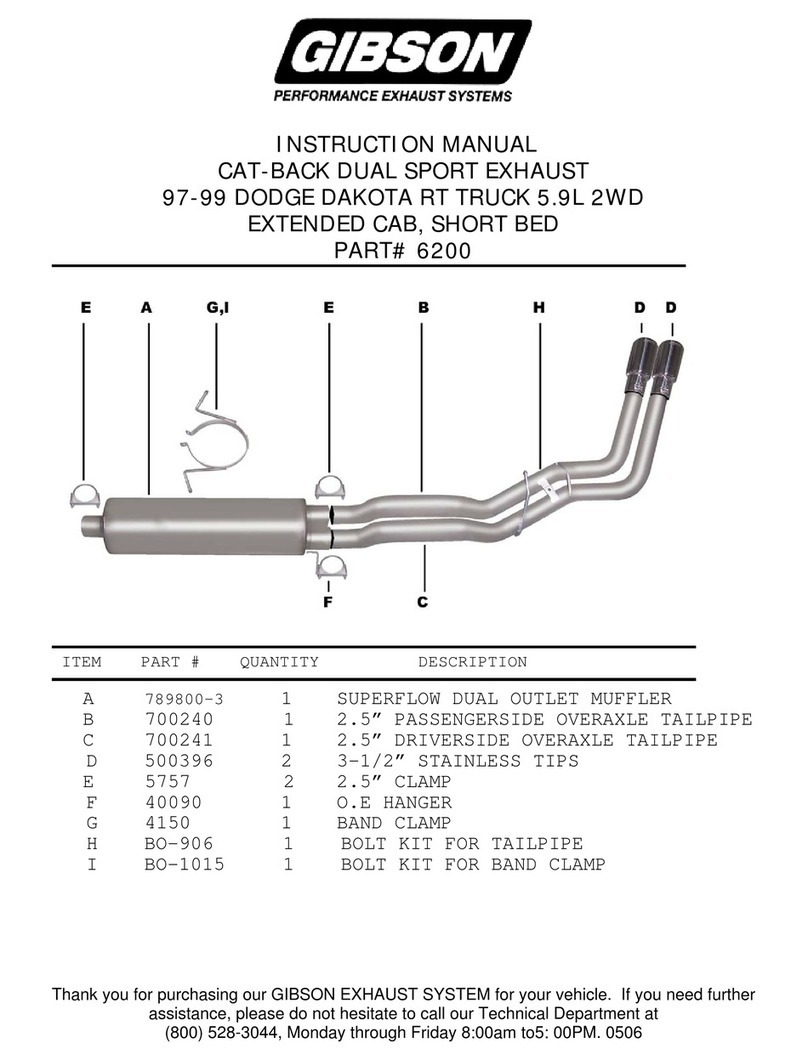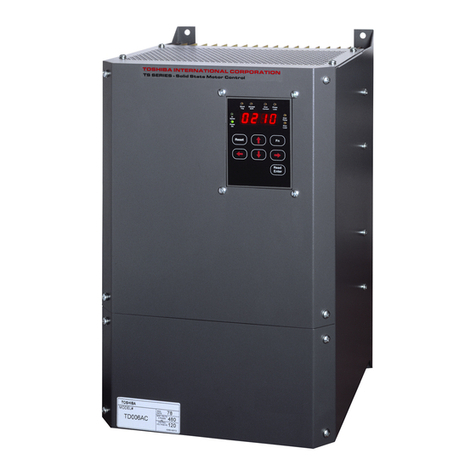Catalog #70011, #70012
Rev. 07/08 - AJ/mc
©2008 Edelbrock Corporation
Brochure No. 63-70011
Page 3 of 5
Baseline Tuning Suggestions
Utilizing nitrous oxide as a power adder is similar to a supercharger or a turbocharger in that it increases the amount of air an engine
can get over a naturally aspirated condition. There are some significant differences:
1. Nitrous oxide is very oxygen rich. This oxygen is of a much higher density, so the opportunity to extract very high quotients of
power is high.
2. Nitrous oxide injection does not have a parasitic load factor associated with its use and as such does not cost horsepower in the
manner of a crank-driven supercharger or an exhaust-driven turbocharger.
The most important thing to remember when looking at baseline tuning issues associated with nitrous oxide is that a lean condition
is bad. Two parameters that will keep you from catastrophically affecting your engine are:
Nitrous Bottle Pressure...Always keep your bottle pressure between 900 and 950 psi. Yes, there are racers that use different
pressures, but the testing we did here at Edelbrock to ensure the jetting maps within this manual are correct, was done in this
pressure range. Use any higher pressure than 950 psi and you will be lean. Use any pressures below 900 psi and you will be
rich.
Fuel Pressure...Always ensure you have between 6-6.5 psi of fuel pressure every time you enable your nitrous system. We
used 6 to 6.5 psi of fuel pressure to perform our jet map testing on this system. If you do not have at least 6psi of fuel pressure
going to the fuel solenoid, when it is activated, you will be encountering a lean condition. If you were to have more than 6.5 psi
of fuel pressure, when it is activated, to the fuel solenoid, you would have a rich condition.
There are many different ways to jet to a specific power level. However, for the continued safe operation of your nitrous system, we
suggest you do not move too far away from the jet map listed within this manual. Catastrophic engine failure could result.
Your 2-Stage Performer RPM nitrous system comes with matched sets of nitrous and fuel jets. These are validated jetting
combinations, based upon 900 to 950 psi nitrous oxide bottle pressure, and 6 to 6.5 psi flowing fuel pressure. Operating with these
pressure levels should yield safe and reliable power increases.
Spark Plug Facts
The most important aspects to be considered when selecting a Spark Plug for your nitrous combination are, but not limited to: heat
range, firing end design, material construction type, reach, thread size, and gap. We advise lowering the heat range of your spark
plugs 1 to 2 steps for every 100 hp added with nitrous. We do not recommend the use of Precious metal type plugs i.e.: Platinum,
Iridium, Gold Palladium, or Yttrium. The tips on these types of plugs can get very hot and cause detonation. It is best to use a non
projected tip plug without a fine wire center electrode designed for a gap between .025" and .035" with a shorter preferably thicker
ground strap. Never try to gap a plug designed for a .060" gap down to.035".
Edelbrock suggest an NGK spark plug with a heat range of -9 to -11 depending on the nitrous power level being tuned. When in doubt,
always go to the next cooler heat range plug.
How to Read Spark Plugs From a Nitrous Oxide Injected Engine...
Spark plugs are a window into the combustion chamber. They will tell you many things about the operation of the vehicle. Here are
some tips on looking at spark plugs to “read” what is happening with your engine:
Correct timing, mixture and spark plug heat range
Ground strap retains “like new” appearance. Edges are crisp, with no signs of discoloration. Porcelain retains clear white
appearance with no “peppering” or spotting.
Excessively rich mixture
Porcelain may be fuel-stained, appearing brown or black. In extreme cases, ground strap, electrode and porcelain may be damp
with gasoline, or smell of fuel.
Detonation
Edges of ground strap may become rounded. Porcelain has the appearance of being sprinkled with pepper, or may have
aluminum speckles. During heavy detonation, the ground strap tip may burn off. This phenomena can result from excessive
ignition timing, too high a heat range spark plug, or inadequate fuel octane.
Excessively lean mixture
Edges of ground strap may become rounded, or broken. (Under moderate overheating, the tip of the ground strap can discolor,
usually turning purple, or the entire ground strap can become discolored.)
